Explore our practical tips for energy-efficient homes and appliances
If you are concerned about the effects of global warming and climate change, you may be wondering how you can make a difference at home.
Your ‘carbon footprint’ is determined by the amount of carbon dioxide your day-to-day actions create. Almost a quarter of Australia’s total greenhouse gas emissions are generated from homes across the country. Everybody can therefore play a role in helping to curb this environmental impact by making some simple lifestyle changes and following these practical tips about how to reduce your carbon footprint at home.
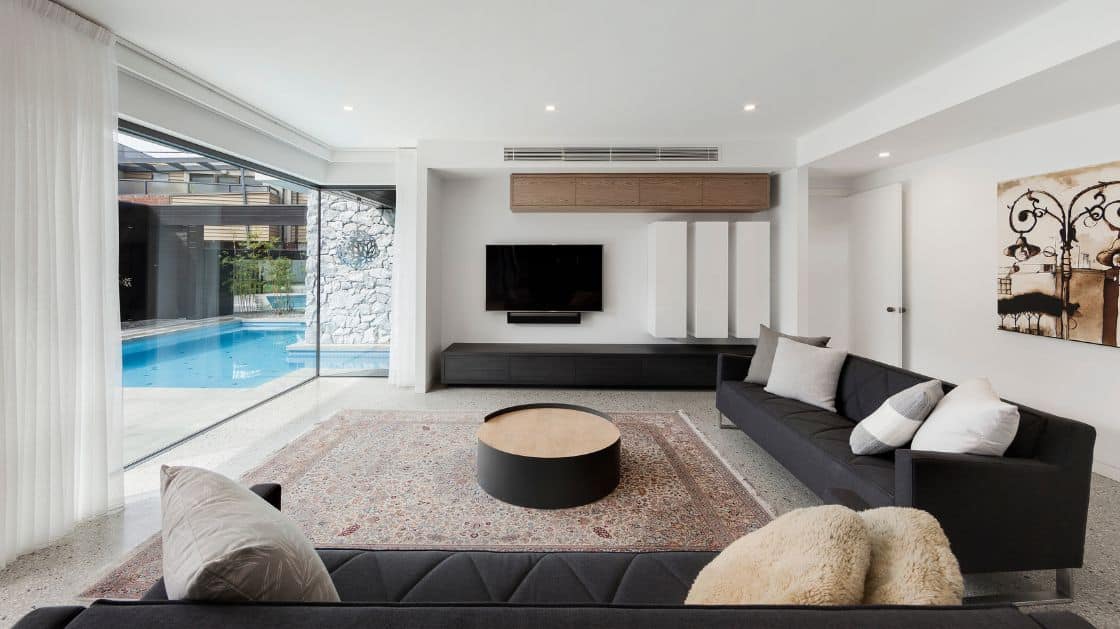
How to get started with creating an eco-friendly lifestyle and more energy-efficient houses
Conscious yet subtle changes to your daily activities and chores can help you make better choices to reduce carbon emissions. For example, improving the way you shop, such as buying more locally produced goods and fewer processed or over-packaged foods is a win for your health, the economy and the environment. Making small changes at home can also have a monumental impact on your carbon footprint, and your energy bills. Learn more about the most practical ways to do this by reading our handy guide below.
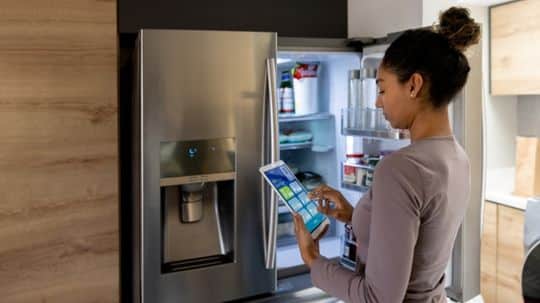
Energy-efficient appliances
Reducing the energy needed to power appliances can reduce your personal carbon footprint. Fortunately, the energy-saving ability of appliances is easy to check through the Energy Rating Label. Regulated by the Australian government, the Energy Rating Label allows us to compare the efficiency of appliances and their running costs before buying them. It has a star rating system—the more stars on the label, the higher the energy-efficiency.
Some apps track and manage your energy usage. One example is the free Energy Savings Calculator app linked to the Energy Rating Label service. Enter the relevant product details on the app to learn how much that appliance will cost to run per year. The app compares energy efficiency between different models to help find the most suitable one for your home and circumstances. Replacing an older, damaged one with a newer, more energy-efficient model can be a better option.
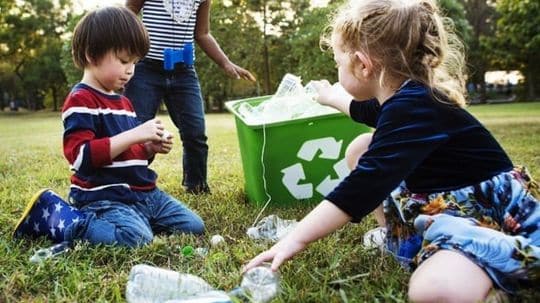
Reduce, reuse and recycle
The three R’s of waste management are simple to integrate into your lifestyle. Reduce wastage by buying products with minimal packaging, carry your own utensils, and opt for thermal mugs instead of reheating beverages in the microwave.
Reuse shopping bags and repurpose plastic containers from yoghurt and ice cream for storage at home. Old newspapers can be reused in packaging, as well as drying and polishing windows and other glass surfaces around the house. Instead of replacing a damaged clothing item, consider repairing or altering it.
Recycling various materials, such as aluminium cans and paper, can help reduce landfill and greenhouse gas emissions. Using items made from recycled materials also makes it easier for them to be recycled again in future, playing a significant role in achieving zero waste.

Renewable energy resources
Making use of renewable energy is key to reducing your carbon footprint. Solar power is a great alternative to electrical energy, especially when solar panels are installed on the roof to directly convert solar energy into electricity. This can power various household appliances or even power your home completely so you can live without reliance on mainstream energy providers of gas and electricity. This is also known as ‘living off the grid’.
A solar water heater does the same job as an electric hot water system, but more efficiently. Heat is accumulated from a solar collector which is then transferred to a water tank, allowing you to enjoy a piping hot shower without consuming a single unit of electricity. Bear in mind that existing hot water systems can sometimes be retrofitted with a solar hot water system. For a new build or a custom house renovation and extension, a complete solar water heater system can be installed.
Heat pumps are another eco-friendly alternative. They extract heat from the air outside and transfer it into the home. While heat pumps need electricity to function, the amount of energy transferred is greater than the amount of energy consumed. Because they capture heat that is already present in the environment, they don’t burn fuel or emit carbon dioxide.
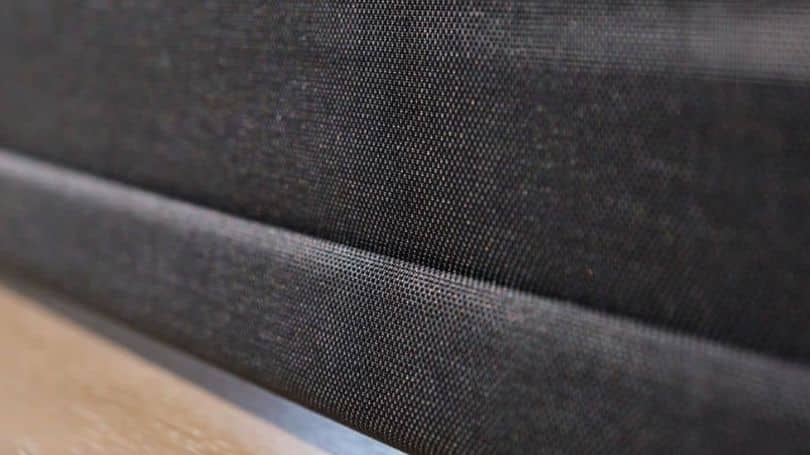
Effective insulation
A house that is not insulated properly will lose heat or energy through the roof, ceiling, walls and floors. When heat escapes, cold air seeps in, so increasing amounts of energy must be used to maintain a comfortable room temperature. Installing proper insulation directly results in a more energy-efficient house.
Insulation materials have an R-value rating measuring thermal resistance. Insulating materials at home with higher R-values therefore perform better to prevent energy from leaking. Spray foam insulation is eco-friendly, and impressive in stopping air from escaping. When compared to commonly-used insulating materials such as fibreglass, spray foam has much stronger resistance to heat loss, a greater lifespan and it won’t collect dust—a big win for those with allergies.
Windows are an obvious escape route for heat. Curtains and blinds are effective thermal controllers, reducing the need for extra heating and cooling systems. The fabrics and materials used have different insulating properties, so speak to a trusted window treatment specialist for advice and a tailored solution. Another effective option is double-glazing, which offers better insulation than single-glazed windows due to the air gap between the two glass panes.
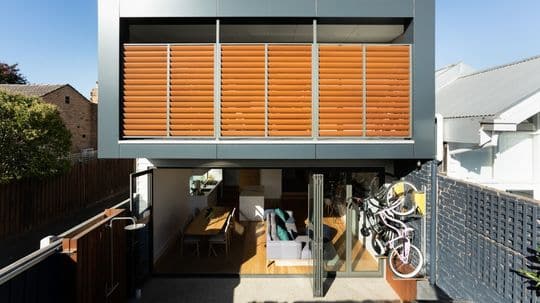
Image source: Spacemaker
Energy-efficient heating and cooling systems
Heating, ventilation and air conditioning systems make up approximately 20-50% of energy used in homes in Australia. Using heating and cooling systems with high energy-efficiency ratings can help lower emissions and save on your power bills. Place them away from windows and doors wherever possible to best regulate the room temperature.
Radiant underfloor heating and cooling systems are a much more effective option to maintain comfortable temperatures while conserving energy, especially when powered by a heat pump.
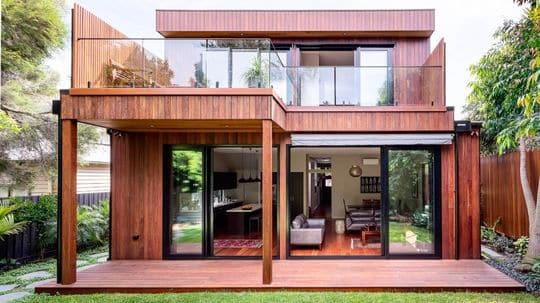
Image source: Spacemaker
Building design, structure and materials
An eco-friendly home design uses passive design principles that focus on using solar energy while taking into account factors like climate variations, flora and fauna, and the shape and position of the block. Unfortunately, a standardised floor plan doesn’t take these factors into account, so enlisting the services of qualified custom home builders will result in a much more effective and environmentally-friendly home design.
The strategic placement of awnings and windows can maximise the winter sun and minimise the need for additional lighting and heating interventions. Homes built using durable materials also last longer, reducing the need for replacements—thus saving energy, time and money.
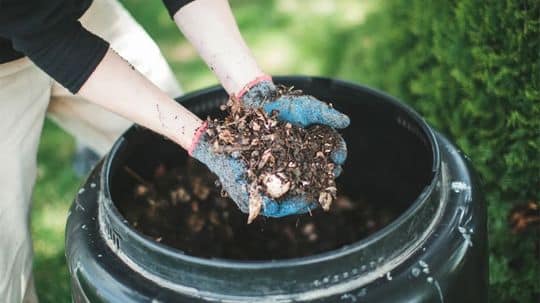
Compost at home
The garbage of the average household in Melbourne contains 50% organic waste which ends up in landfill and releases methane gas and odours that negatively contribute to climate change. Reduce waste by creating compost at home using waste from fruits, vegetables, egg shells, tea bags and coffee grounds to start composting. The resultant mixture is full of nutrients, and can enrich your garden soil.
Alternatively, discard scraps into a food and garden waste bin which the council disposes of in an environmentally-friendly manner. Pet waste can also be composted at home if kept separate from the food scraps.
Creating and maintaining a sustainable garden doesn’t require huge amounts of water, toxic fertilisers, fuel for transport or lots of land, and positively contributes to a healthy, biodiverse planet. Use your compost at home to grow vegetables and plants so you can avoid wasting resources while enjoying a healthier lifestyle.

Save water
Energy is needed to filter, heat and pump water to your home—so conserving water therefore has a direct impact on saving energy and reducing your carbon footprint. Opting for water-saving appliances while being water-wise is a good starting point to save as much of this precious resource as possible.
Collecting rainwater in a rainwater tank has many benefits and is especially advantageous during droughts and bushfire season. Rainwater can also be used for washing clothes, washing the car, gardening and refilling toilet tanks. Fit toilets with a dual-flush or low-flush tank to save even more water daily.
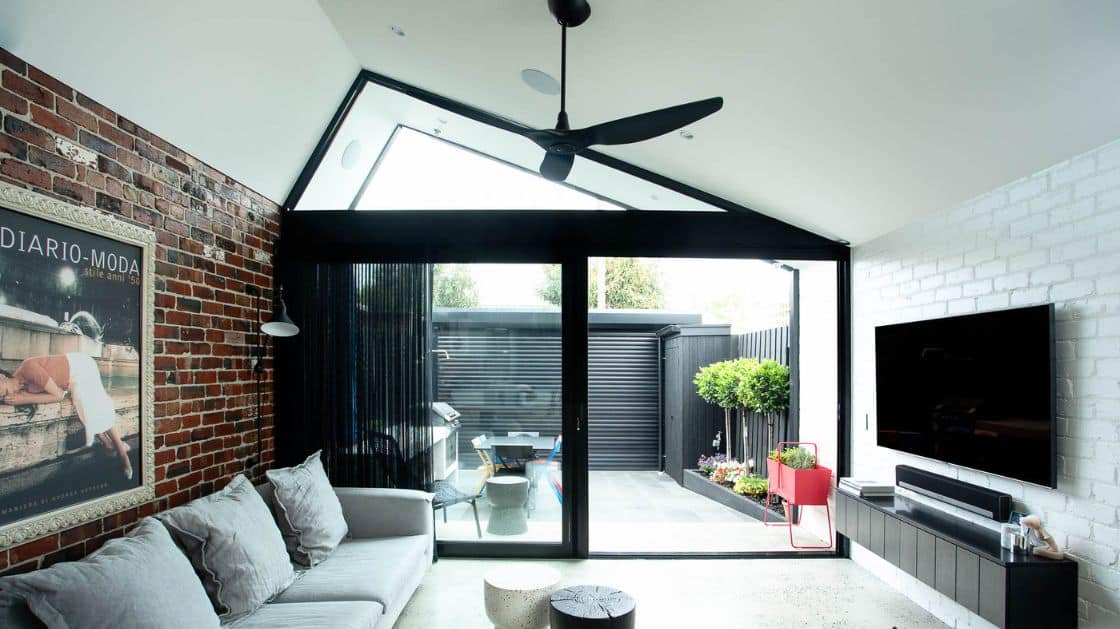
Lead a more energy-efficient lifestyle with Spacemaker
There are many things you can do to reduce your carbon footprint. Seeking out businesses that invest time and resources to ensure their practices, products and services are environmentally friendly can help to make wiser and more conscious decisions to reduce your carbon footprint. Spacemaker’s renovations, extensions and custom home builds are compliant with industry sustainability standards.
To take this one step further, our home designs can be customised to leverage passive design principles and we can work with you to design a home that will meet your specific energy-efficiency targets. If you would like to know more about renovating your home to help reduce its carbon emissions and your carbon footprint call 03 8873 7800 to speak to a Spacemaker Design Consultant.






